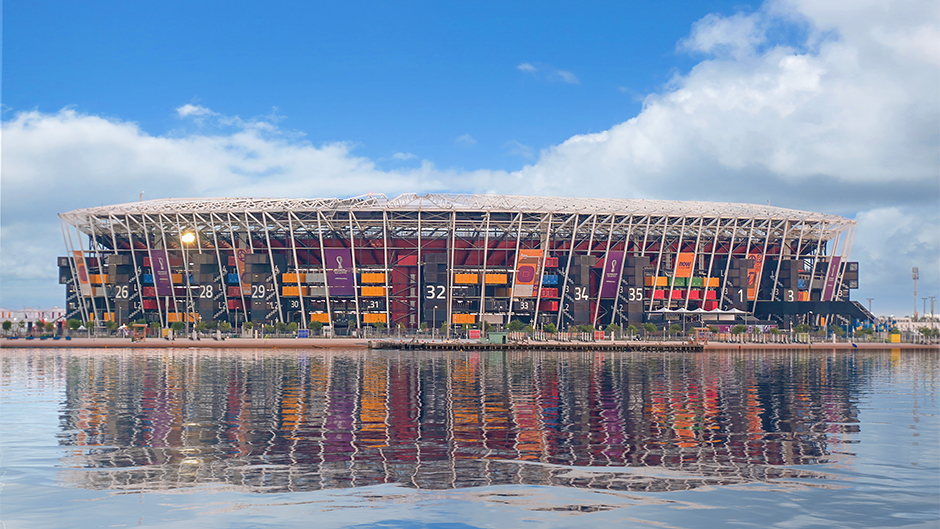Engineering shapes every aspect of life, and major sporting events are no exception.
On Sunday, November 20, the long-awaited FIFA World Cup 2022 kicked off with host country Qatar losing 2-0 to Ecuador. Every four years, the tournament pits the 32 best national teams from around the world against each other, with this World Cup’s final match taking place on December 18.
The most high-tech World Cup yet
Engineers revolutionized critical aspects of this year’s World Cup. Stadium 974, one of the eight stadiums housing the tournament, will essentially disappear after the new champion is crowned. Made of 974 shipping containers, this stadium is the first of its kind–able to be fully taken apart and put back together.
“It’s definitely an interesting example of sustainability,” said Landolf Rhode-Barbarigos, assistant professor in the Department of Civil and Architectural Engineering. “Recycled shipping containers are combined within a steel framework to create the space. The goal was to reduce construction cost, duration, and material waste while making a connection to Qatar’s profile as a trading hub.”
Qatar 2022 will feature multiple modular stadiums, enabling the removal or addition of seats and easier relocation.
“Such approaches are in line with the sustainability research and modular coastal protection systems we are developing at the College of Engineering,” said Prannoy Suraneni, assistant professor in the Department of Civil and Architectural Engineering.
Suraneni and Rhode-Barbarigos, as well as Antonio Nanni, professor and chair of the Department of Civil and Architectural Engineering, and Esber Andiroglu, associate professor of practice in the Department of Civil and Architectural Engineering, are working on SEAHIVE, modular living shorelines, with support from the University’s Laboratory for Integrative Knowledge (U-LINK) which funds interdisciplinary faculty teams involved in complex societal problems.
SEAHIVE, developed by faculty from the College of Engineering as well as the Rosenstiel School of Marine Science, is being deployed locally in North Bay Village to provide habitats for local marine life while providing protection from storm surge.
“Our aim is to educate the public and elected officials about resilient and sustainable design through pilot projects like SEAHIVE in the community,” said Andiroglu. “Stadium 974 exemplifies this approach on a global scale.”
“The FIFA World Cup is perhaps the most relevant and watched sporting event in the world, even without the Italian team,” Nanni said. “The value of this stadium design, aside from its technological merits, is to center the issue of sustainability for the general public. We cannot address sustainability without the buy-in of all people.”
Reinventing the ball
In addition to stadiums, the football itself has been transformed for Qatar 2022. According to FIFA, “Designed from the inside out using data and rigorous testing at Adidas labs, in wind tunnels and on the pitch by football players themselves, [this year’s ball] provides the highest levels of accuracy and reliability on the field of play, partly due to its new panel shape and surface textures.”
Beyond speed, technology implanted in the ball allows it to be tracked and analyzed to a dizzying degree. The ball is connected to the video-assistant-referee (VAR) through an inertial measurement (IMU).
“The IMU makes the football superpowered,” said Lokesh Ramamoorthi, a lecturer in software engineering and cybersecurity in the Department of Electrical and Computer Engineering. “Before, the football was tracked through watching recorded video. Now, the IMU chip will precisely track the trajectory and velocity of the ball using an accelerometer as well as a gyroscope, enabling the most accurate refereeing yet and storage allowing future analysis of the data.”
Engineers aren’t the only ones keeping close tabs on new tech at the World Cup. Players have noticed the changes too. Uruguayan goalkeeper Sergio Rochet told reporters the first day of the tournament, “This is a very fast ball. We are in a process of adaptation…Year after year, it gets better for the strikers and for us goalkeepers it gets very tough.”

